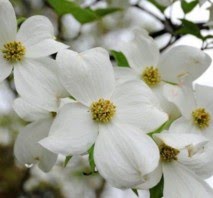CHAMOMILE (Matricaria recutita) This aromatic herb has finely cut spreading foliage and lovely white flowers in July. Leaves and flowers used in beneficial teas and hair conditioners. Plant in the border garden in average, well-drained soil. (source: Chef Jeff)
 Let's face it Chamomile plant is a weed. Albeit a wonderful fragrant herbal weed with tiny daisy-like flowers circling a raised, cone-shaped, yellow centers. The chamomile flowers are less than an inch wide, growing on long, thin, light green stems.
Let's face it Chamomile plant is a weed. Albeit a wonderful fragrant herbal weed with tiny daisy-like flowers circling a raised, cone-shaped, yellow centers. The chamomile flowers are less than an inch wide, growing on long, thin, light green stems. Chamomile grows in almost any soil. You will only need one small cutting or seedling for a lifetime supply of chamomile plants. The plants self-seed freely, they are easily propogated from root cuttings or divisions. I usually just walk along the lawn during early spring and dig out the new seedlings and transplant them into a garden bed.

Harvesting and preparation:
Remove flowers with stem tips when they are in full bloom, when petals are beginning to turn back from the center, and allow them to dry. If the flowers are infested with insects (a common problem), spread the flower heads on a baking tray and bake at about 60 C or 150 Ffor 30 minutes, then sift carefully through a colander.
Remove flowers with stem tips when they are in full bloom, when petals are beginning to turn back from the center, and allow them to dry. If the flowers are infested with insects (a common problem), spread the flower heads on a baking tray and bake at about 60 C or 150 Ffor 30 minutes, then sift carefully through a colander.
Alternate method: Pull the entire flowering plant at full flower and cut off the root and any brown parts. Tie bundles of the plant and put them into large paper bags with the flowers pointed downwards. Cut air vents in the sides of the bags, but make sure to keep the bottoms whole. Hang up to dry. After about a week they should be dry, give the bag a shake or two to knock loose any flowers still attached or caught in the bundles. When the plant has dried, the flowers fall out in the bottom of the bag and can be collected. (source: Kitchen Witch)

Chamomile teas, ointments, and extracts all start with the white and yellow flower head. The flower heads may be dried and used in teas or capsules or crushed and steamed to produce a blue oil, which has medicinal benefits. The oil contains ingredients that reduce swelling and may limit the growth of bacteria, viruses, and fungi. (source: University of Maryland Medical Center)













No comments:
Post a Comment